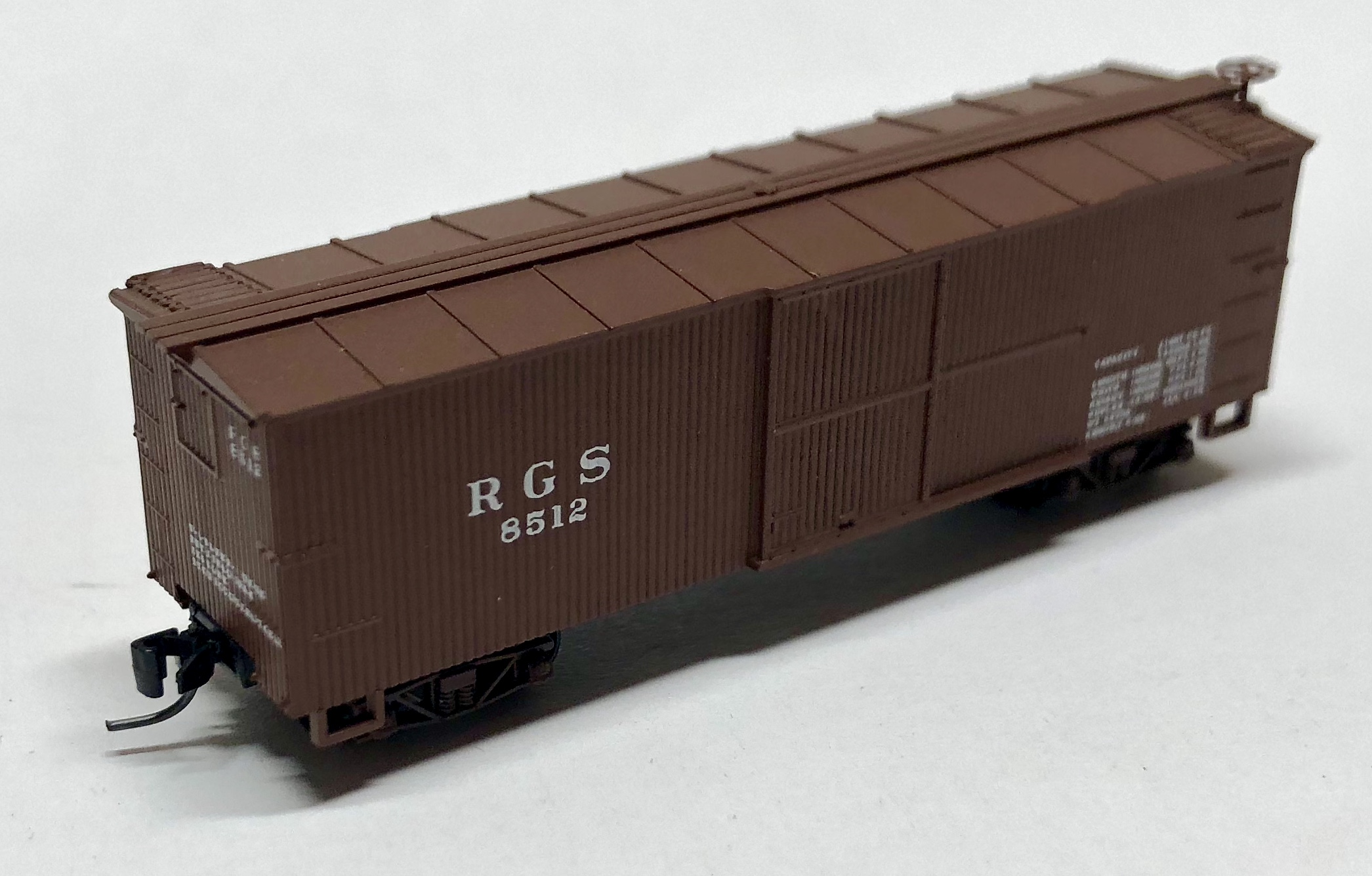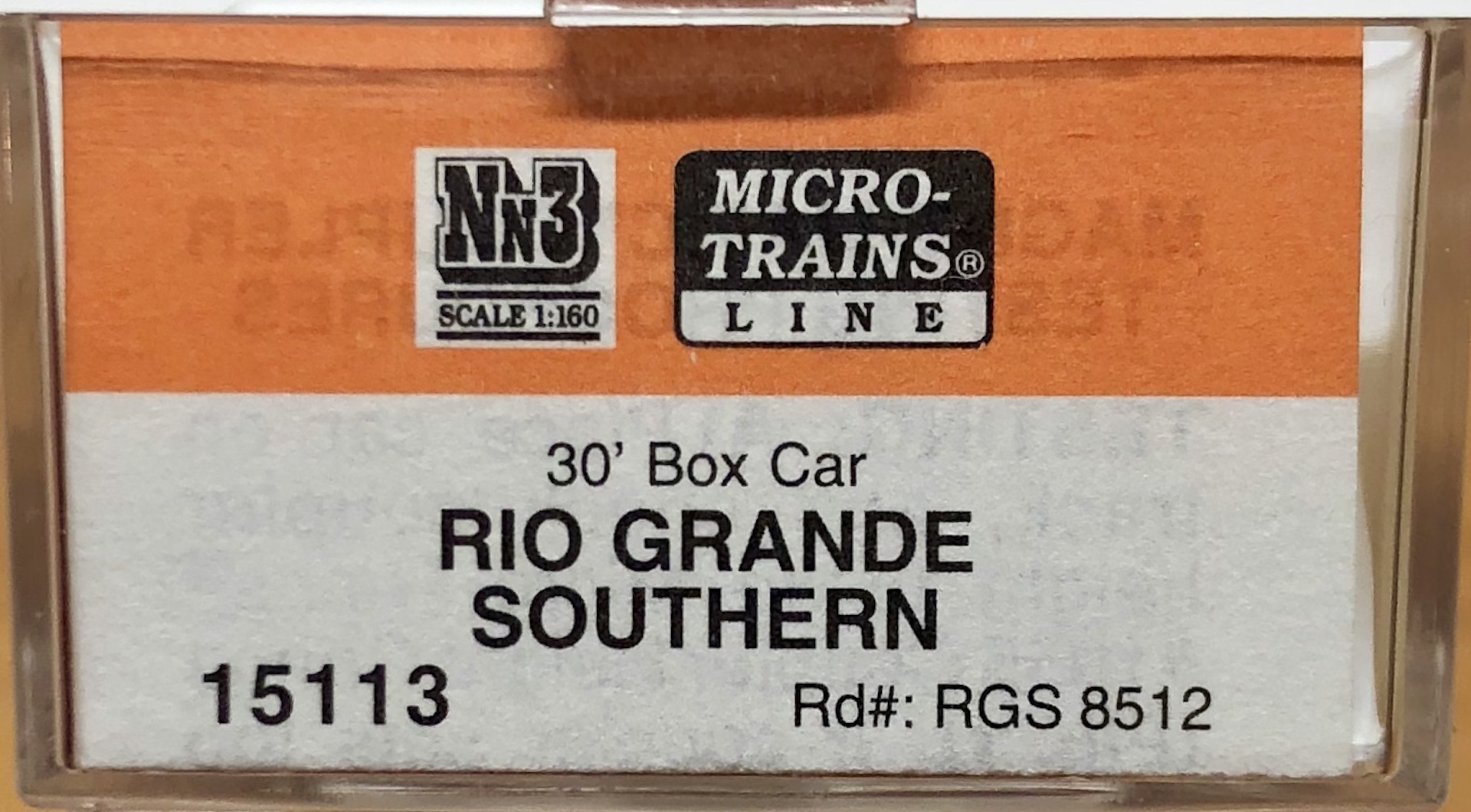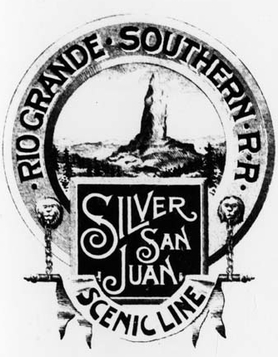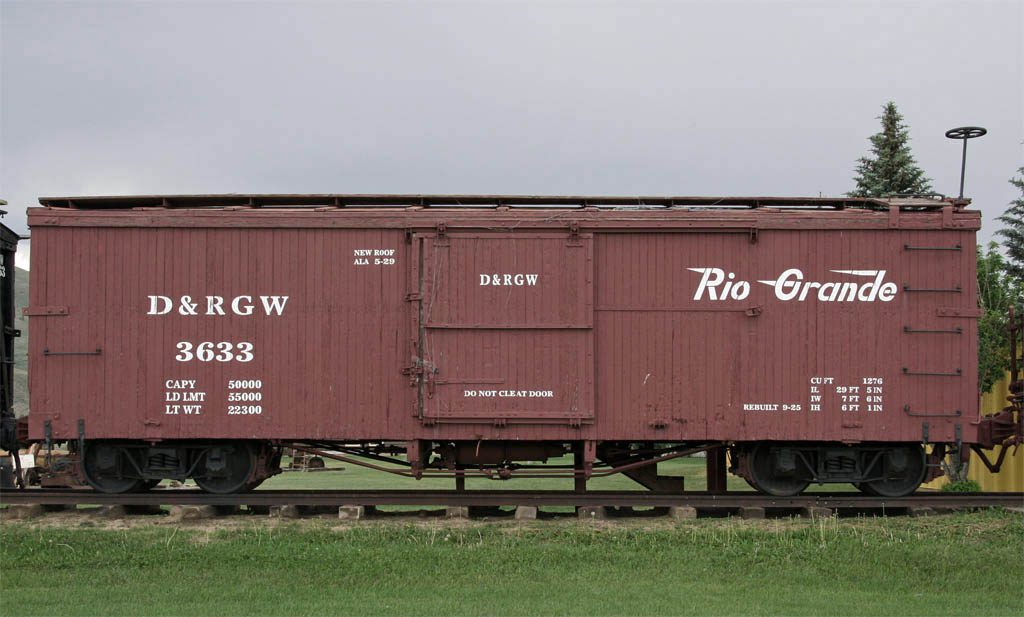Model Information: Micro-Trains introduced a Nn3 narrow gauge range in 1988 that includes a 30' boxcar, a 30' gondola, a 30' flat car and a caboose. The models are re-run occasionally since then.
Prototype History: A class of 750 boxcars, 30ft long and with a capacity of 25 tons, has been delivered to the D&RG by the American Car & Foundry in 1904; they were numbered from 3000 to 3749. In 1926, these boxcars were extensively rebuilt, keeping only a few iron parts from the original boxcars, but the new cars retained the same numbers. A large part of these boxcars remained in revenue service until the end of freight operations on the Rio Grande narrow gauge in 1968. Many boxcars of this class have been preserved today, including 45 on the Durango & Silverton Narrow Gauge Railroad, about twenty in their original condititon on the Cumbres & Toltec Scenic Railroad (plus 22 other converted to passenger cars), 9 at the Georgetown Loop Railroad and another 4 at the Colorado Railroad Museum. All the Rio Grande boxcars were completely made of wood (body and frame), except for numbers 3000-3749 which received a steel roof during their 1926 rebuilding.
Road Name History: The RGS was incorporated in Colorado in 1889 by Otto Mears who had previously built the Silverton Railroad in an attempt to close the distance between Denver & Rio Grande’s Silverton Branch and the line to Ouray to the north. The Silverton had closed to within 8 miles but the route beyond was impassable by a steam road. Mears built a wagon road between them but it was blocked by snow or slides much of the time. He chartered the RGS to link the two lines via a longer but easier route. The RGS built from Dallas Junction (later renamed Ridgeway) on D&RG’s Ouray line generally south to the mines at Telluride. Construction west then north from a connection with the D&RG at Durango began the following year. Along the way, the RGS would serve the silver producing cities of Placerville and Rico as well as other small communities. The first through train from Durango to Ridgeway ran on the second day of 1892. Total mileage was 174 (making it slightly longer than the Akron Canton & Youngstown), all of it 3’ gauge.
RGS had just two years of prosperity. In 1893, Congress repealed the Silver Purchase Act and the bottom dropped out of the Colorado mining industry. RGS fell under the control of the Denver & Rio Grande where it would remain until 1929.
The early locomotive fleet was largely made up of former Rio Grande Western narrow gauge engines that became available when the RGW was standard gauged. By that time, the RGW engines were mostly worn out (in fact more than one of the purchased engines would never turn a wheel for the RGS.) RGS continued to buy secondhand power from lines such as the D&RG, Florence & Cripple Creek, and Colorado & Southern. In fact, RGS would never buy a brand new locomotive.
For many years, RGS made a narrow profit from operations but it was never enough to cover the interest on the debt incurred from construction. The company never paid a dividend. The busiest times were during the fall livestock rush as ranchers hurried to get their animals off the high grazing lands before the first snows set in. RGS trains between 30 and 40 cars were run during these times. (That may seem like a lot for narrow gauge but both D&RGW and C&S ran freights twice that length.) Washouts and mudslides plagued the line. Derailments were a weekly occurrence (although the trains were so slow, little damage was usually done.) In 1929, D&RGW gave up control and the RGS slipped into receivership.
With passenger traffic declining, RGS first resorted to mixed trains and then built the Galloping Geese. The first was fairly small and built from a Buick. Several others were built using larger Pierce Arrow limousine bodies followed by Geese with bus bodies. These could carry several passengers and tons of LCL cargo and mail in the back. The Geese were easy and cheap to repair and only required a one man crew.
RGS had their own freight car fleet but most of the cars seen on the line at any given time belonged to the D&RGW. When the Colorado & Southern abandoned their narrow gauge lines in 1938, RGS picked up a slew of freight cars on the cheap. Those cars had steel frames and Bettendorf style trucks.
The receiver had applied for a loan from the Reconstruction Finance Corporation but was turned down because the RGS’s prospects were too dim. Once America entered the Second World War, the loan suddenly became available. In addition, a subsidiary of the RFC bought the RGS for $65,000 and leased it back the the receiver. Not long after that, RGS began hauling “yellow cake” from old mine tailings in boxcars south to Durango and interchanging them with the D&RGW. They didn’t know it at the time but RGS was moving the raw material used to make the first atomic bombs.
The RGS would operate in receivership until 1951 when their application to abandon the line was accepted by the ICC. No one along the line had protested the abandonment. In 1953, the rails were pulled up.
RGS had just two years of prosperity. In 1893, Congress repealed the Silver Purchase Act and the bottom dropped out of the Colorado mining industry. RGS fell under the control of the Denver & Rio Grande where it would remain until 1929.
The early locomotive fleet was largely made up of former Rio Grande Western narrow gauge engines that became available when the RGW was standard gauged. By that time, the RGW engines were mostly worn out (in fact more than one of the purchased engines would never turn a wheel for the RGS.) RGS continued to buy secondhand power from lines such as the D&RG, Florence & Cripple Creek, and Colorado & Southern. In fact, RGS would never buy a brand new locomotive.
For many years, RGS made a narrow profit from operations but it was never enough to cover the interest on the debt incurred from construction. The company never paid a dividend. The busiest times were during the fall livestock rush as ranchers hurried to get their animals off the high grazing lands before the first snows set in. RGS trains between 30 and 40 cars were run during these times. (That may seem like a lot for narrow gauge but both D&RGW and C&S ran freights twice that length.) Washouts and mudslides plagued the line. Derailments were a weekly occurrence (although the trains were so slow, little damage was usually done.) In 1929, D&RGW gave up control and the RGS slipped into receivership.
With passenger traffic declining, RGS first resorted to mixed trains and then built the Galloping Geese. The first was fairly small and built from a Buick. Several others were built using larger Pierce Arrow limousine bodies followed by Geese with bus bodies. These could carry several passengers and tons of LCL cargo and mail in the back. The Geese were easy and cheap to repair and only required a one man crew.
RGS had their own freight car fleet but most of the cars seen on the line at any given time belonged to the D&RGW. When the Colorado & Southern abandoned their narrow gauge lines in 1938, RGS picked up a slew of freight cars on the cheap. Those cars had steel frames and Bettendorf style trucks.
The receiver had applied for a loan from the Reconstruction Finance Corporation but was turned down because the RGS’s prospects were too dim. Once America entered the Second World War, the loan suddenly became available. In addition, a subsidiary of the RFC bought the RGS for $65,000 and leased it back the the receiver. Not long after that, RGS began hauling “yellow cake” from old mine tailings in boxcars south to Durango and interchanging them with the D&RGW. They didn’t know it at the time but RGS was moving the raw material used to make the first atomic bombs.
The RGS would operate in receivership until 1951 when their application to abandon the line was accepted by the ICC. No one along the line had protested the abandonment. In 1953, the rails were pulled up.
Brand/Importer Information: Micro-Trains is the brand name used by both Kadee Quality Products and Micro-Trains Line. For a history of the relationship between the brand and the two companies, please consult our Micro-Trains Collector's Guide.
Manufacturer Information:  Micro-Trains Line split off from Kadee Quality Products in 1990. Kadee Quality Products originally got involved in N-Scale by producing a scaled-down version of their successful HO Magne-Matic knuckle coupler system. This coupler was superior to the ubiquitous 'Rapido' style coupler due to two primary factors: superior realistic appearance and the ability to automatically uncouple when stopped over a magnet embedded in a section of track. The success of these couplers in N-Scale quickly translated to the production of trucks, wheels and in 1972 a release of ready-to-run box cars.
Micro-Trains Line split off from Kadee Quality Products in 1990. Kadee Quality Products originally got involved in N-Scale by producing a scaled-down version of their successful HO Magne-Matic knuckle coupler system. This coupler was superior to the ubiquitous 'Rapido' style coupler due to two primary factors: superior realistic appearance and the ability to automatically uncouple when stopped over a magnet embedded in a section of track. The success of these couplers in N-Scale quickly translated to the production of trucks, wheels and in 1972 a release of ready-to-run box cars.
Micro-Trains Line Co. split off from Kadee in 1990 to form a completely independent company. For this reason, products from this company can appear with labels from both enterprises. Due to the nature of production idiosyncrasies and various random factors, the rolling stock from Micro-Trains can have all sorts of interesting variations in both their packaging as well as the products themselves. When acquiring an MTL product it is very important to understand these important production variations that can greatly enhance (or decrease) the value of your purchase.
Please consult our Micro-Trains Collector's Guide

Micro-Trains Line Co. split off from Kadee in 1990 to form a completely independent company. For this reason, products from this company can appear with labels from both enterprises. Due to the nature of production idiosyncrasies and various random factors, the rolling stock from Micro-Trains can have all sorts of interesting variations in both their packaging as well as the products themselves. When acquiring an MTL product it is very important to understand these important production variations that can greatly enhance (or decrease) the value of your purchase.
Please consult our Micro-Trains Collector's Guide
Item created by: grothe77 on 2020-07-04 14:42:59. Last edited by Alain LM on 2020-07-16 14:56:08
If you see errors or missing data in this entry, please feel free to log in and edit it. Anyone with a Gmail account can log in instantly.
If you see errors or missing data in this entry, please feel free to log in and edit it. Anyone with a Gmail account can log in instantly.











